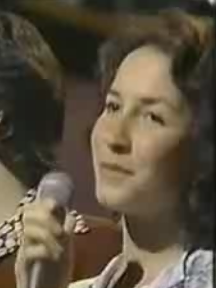日本語 ____ Français ____ English ____ Italiano ____ Español ____ Deutsch ____ Português
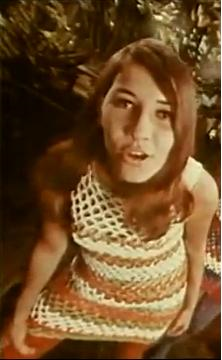
Sergio Mendes & Brasil’66
1966:Herb Alpert Presents; Sergio Mendes & Brasil’66
1967:Equinox
1968:Look Around
1968:Fool on the Hill
1969:Crystal Illusions
1969:Ye-Me-Lê
1970;Live at the Expo
1971:Stillness
While, in the three decades after the music of modulations to distant keys with common pentatonic notes of Kate Bush, music did not change so much, it seems these five years were the Cambrian of music. Day Tripper is a hit in 1966, and 1971 is the year of Return to Forever with Chick Corea with electric piano. (I would have listened What Game Shall We Play Today sung by Lani Hall.)
In 1965, in the United States, Sergio Mendes found a cute singer with a very very beautiful voice. At that time, he had a vague idea of creating a latin pop group with two female singers. He concluded to make an album as overdubbing that voice in unison, placing another girl who does not sing but plays the image of the second voice. So he makes an album with the alto-falsetto voice of Lani Hall only, in unison, using a multitrack recording system. (Double track vocals).
That is in the music business in the United States. Sergio Mendes and Brasil ’66 is a American group of Brazilian-style. Sergio Mendes wanted to make a record of Brazilian songs sung in the Brazilian language in United States. He wanted to make hits with the real Brazilian music. Lani Hall is an American girl, barely twenty years old. She is born and living in Chicago. So she doesn’t speak Portuguese at all. But her voice is so beautiful. So, even for Brazilian songs, as teaching pronunciation, syllable by syllable, it is no one else but she should sing. Lani Hall is a singer with such a beautiful voice. Even though there are two singers with a multitrack recording and a Brazilian singer and an American singer could be possible, it is Lani Hall who sings all.
The music of Sergio Mendes is cool. The sound and style is unique and attractive. The name of the group involves the year, so the year of Sergio Mendes’ ideas can be easily indexed in time table.
The congas are not instruments of Brazilian music. It’s a great idea that there are congas in a group of bossa nova. Miles was starting to use congas too.
Already in 1968, in “Look Around”, “The Fool On The Hill”, Sergio Mendes uses an electric piano (called also Rhodes piano or Fender piano).
Let’s see the others.
The tone of electric piano is made by amplifying the sound of 88 tuning forks. Its pure sound is fit to the smoothness of the voice of Lani Hall.
I think Sergio Mendes is a left handed person. There are two champions of left handed pianists; Glenn Gould and Ludwig von Beethoven. Among jazz pianists; Erroll Garner. Sergio Mendes knows play ff and pp (with una corda in Going Out of My Head). I think the balance of the piano is like that of Beethoven.
Voices in unison. The 5th Dimension’s ” Up, Up and Away” is in 1967. The 5th Dimension is a chorus group, but the five members of that chorus group sing in unison. Stevie Wonder’s “Golden Lady” is in 1973. By the way, it is just like a piano. Why just like a piano? Because, piano is an instrument of unison. Except for the lowest register, every note is made of two or three strings in unison. That might be the cause of the preference of Sergio Mendes in unison. Chorus in unison has a charm to give us an illusion that we sing together. This means that the melody is determined on the partition level. Improvisation is ugly. Stevie Wonder is an exception for that. Singing together is fundamental and primitive pleasure of music since neanderthals. That singing-together element is more evident in Gracinha Leporace than Lani Hall. I think Lani Hall doesn’t like sing together with fixed score notes, even with herself. Lani Hall is an exceptional singer and her improvisation can become an amazing thing. But ordinary instrumentalists’ ad-lib is really a haphazard play and that is what Lani Hall must know. In Sergio Mendes’ records, he avoids too long ad-lib part and the first three records have been done with well written scores, with the good bassist, Bob Matthews, who maybe doesn’t like electric bass.
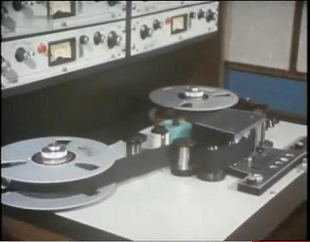
Brasil ’66 gives people an image that two girls are singing.
Perhaps many people don’t recognise that the two voices are one and the same voice. The multitrack recording. Brasil ’66 has to exist outside of the recording studio. For the record jackets and TV show, Sergio Mendes is obliged to put another girl for the visualization of his music style. I think the other girl used to come in the recording studio not very often. The name on record jacket can not be “LANI HALL” , because the two girls’ image is essential. Image of a group. At the same time as Brasil ’66, there is a group called “Bossa Rio” ( I like “Canção do Sal”). The singer of Bossa Rio is Gracinha Leporace. She, too, is a really good singer. But the image of a group needs someone who plays the role of the second voice of Lani Hall. A real singer is not in the project. The idea of style has been made by Sergio Mendes, but the interpretation namely the realization is done by Lani Hall. Brasil ’66 is entirely dependent on Lani Hall. Each song is arranged so as to make people listen to the beautiful voice of Lani Hall. She is irreplaceable. Often we forget that Sergio Mendes is a singer too. He thinks he is a singer and Brasil ’66 is his group.
Lani Hall sings in the group of Sergio Mendes for five years.
As Lani Hall is an English speaking person, in the bossa nova songs, she sings with attacking accents (>), which the Brazilian singers have not. Gracinha Leporace sings in a gorgeous saturation.
Discography of Sergio Mendes and Brasil ’66
They make three albums.
1966: Herb Alpert Presents: Sergio Mendes & Brasil ’66
1967: Equinox
1968: Look Around
The first group of Brasil ’66 has Lani Hall and Janis Hansen as singers.
The accompaniment in the first two discs consists of only piano other than drums, percussion and contrabass. They do also chorus.
I put the name of singer in [ ]. This has been determined solely by my ear, not by any official documents. [2 ] means double-track.
The male voice is Sergio Mendes. It is not noted.

1966: Herb Alpert Presents: Sergio Mendes & Brasil ’66
(A&M Records; Producer Herb Alpert, Jerry Moss)
1.Mas Que Nada [2 Lani Hall ] (Jorge Ben) Sai da minha frente, que eu quero passar!
Only Lani Hall is singing, twice. In videos, there are two singers, but the same voice.
This song ends with the 4th note, namely Fm11
2.One Note Samba[2 Lani Hall ] (Antonio Carlos Jobim / Newton Mendonça)


3.The Joker [2 Lani Hall ](Leslie Bricusse / Anthony Newley)
4.Going Out of My Head [2 Lani Hall ] (Teddy Randazzo / Bobby Weinstein)
Listen to the pp part of the piano.


5.Tim Dom Dom [ Lani Hall ](João Mello / Clodoaldo Brito)
6.Day Tripper [2 Lani Hall ](John Lennon / Paul McCartney)
In ad lib part, B natural note on C7 chord is Mozart?
7.Água de beber [ Lani Hall ] (Antonio Carlos Jobim / Vinícius de Moraes / Norman Gimbel)
8.Slow Hot Wind[ Lani Hall ] (Henry Mancini / Norman Gimbel)
9.O Pato [2 Lani Hall ](Jayme Silva / Neuza Teixeira)
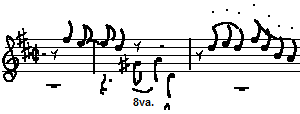

10.Berimbau [2 Lani Hall ] (Baden Powell / Vinícius de Moraes)
Sérgio Mendes – Keyboards, Vocals, Arranger
Lani Hall – Vocals
Bob Matthews – Bass, Vocals
Jose Soares – Percussion (Including two hands finger snap in “Mas Que Nada”. However, on the second snap, one hand misfired. In addition, in Day Tripper with clapping hands, he does one too many. However, Sergio Mendes did 18 bars ad lib instead of 16.
I think it’s his tambourine that made the hit of “Mas Que Nada.”), Vocals
Joao Palma – Drums
A Trombone in Água de beber, I think it’s Urbie Green. João Palma and Urbie Green play together so often.
I put the name of singer in [ ]. This has been determined solely by my ear, not by any official documents.

1967: Equinox (A&M Records, Producer Herb Alpert, Jerry Moss )
1.Constant Rain [2 Lani Hall] (Chove Chuva) (Jorge Ben / Norman Gimbel)
The heart of Brazilian music is to use any available instrument that is there, otherwise clapping hands. These instruments are out of a box of toys.
2.Cinnamon and Clove[2 Lani Hall, +Janis Hansen in chorus ] (Jonny Mandel / Alan & Marilyn Bergman)
Janis Hansen’s childish voice can be easily heard.
3.Watch What Happens [2 Lani Hall ](Michel Legrand / Jacques Demy / Norman Gimbel)

4.For Me[2 Lani Hall ] (Edu Lobo / Norman Gimbel)
at the sixth bar in intro, there is a humming of Lani Hall.
5.Bim Bom[2 Lani Hall, +Janis Hansen in chorus ] (João Gilberto)

There is someone who has a cold.
6.Night and Day [2 Lani Hall](Cole Porter)
7.Triste [2 Lani Hall, +Janis Hansen in chorus ](Antonio Carlos Jobim)
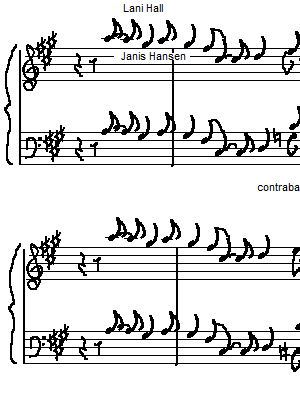
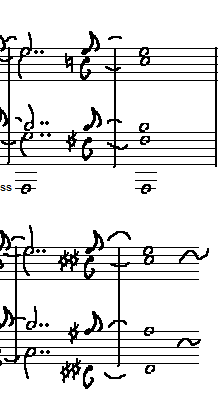
The drums does not starts at 9th bar, but at 11th bar, requintado.
8.Gente [2 Lani Hall ] (Marcos Valle / Paulo Sérgio Valle)
9.Wave [2 Lani Hall ] (Antonio Carlos Jobim)
Multitrack chorus in unison.
“Together” in the intro is counted three times.
10.Só Danço Samba [Lani Hall, +Janis Hansen in chorus ] (Jazz ‘n Samba) (Antonio Carlos Jobim / Vinícius de Moraes)
“Só” means “only”.
Janis Hansen’s voice can be heard.
Sérgio Mendes – Piano, Vocals, Arranger
Lani Hall – Vocals
Janis Hansen – Vocals
John Pisano – Guitar
I think it can be John Pisano who is playing a real small sitar in Constant Rain. If it ware a prepared guitar as a fake sitar, a guitarist could play much much better and in different ways. If it had been a prepared guitar, you would not have done imitation of guitar choking.
Bob Matthews – Bass, Vocals
José Soares – Percussion, Vocals
João Palma – Drums
The same trombonist as in Água de beber is playing in Wave and Bim Bom , I think it’s Urbie Green.
Bruce Botnick – Engineer
Larry Levine – EngineerI put the name of singer in [ ]. This has been determined solely by my ear, not by any official documents.
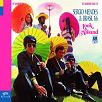
1968: Look Around (A&M Records, Producer Herb Alpert, Jerry Moss)
1.With A Little Help From My Friends [2 Lani Hall ](John Lennon / Paul McCartney)
From beginning to end, we hear the non-harmonic notes (7th, 4th, etc.) of synthesizer as a harmonium. Paul Hindemith?
2.Roda [2 Lani Hall ](Gilberto Gil / João Augusto)
3.Like A Lover [2 Lani Hall ](Dori Caymmi / Nelson Motta / Alan Bergman / Marilyn Bergman)
4.The Frog (A Rã) [2 Lani Hall] (João Donato)
5.Tristeza (Goodbye Sadness) [ ] (Haroldo Lobo / Niltinho Tristeza)
6.The Look of Love [Janis Hansen starts, Lani Hall ] (Burt Bacharach / Hal David) 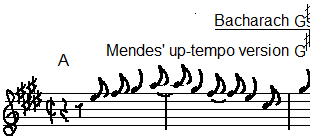
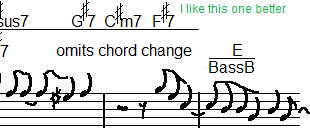
It’s the only song sung by Janis Hansen.
Semitone-up is a refreshing effect that Stevie Wonder always uses, at the end of song. In this song, Sergio Mendes does a semitone-up already after the 8th bar and naturally, in the second chorus, the second semitone-up. Two female voices in 8va.
Now, people know the voice of Janis Hansen and the difference of the two voices and where is Janis Hansen in the first album? etc. But I think people still don’t care about the singers of the group and Lani Hall stays anonymous. I think Sergio Mendes should not have needed to worry about that Herb Alpert didn’t present Janis Hansens. The first album is really one of masterpieces in the history of music, like the last Goldberg of Gould. Sergio Mendes is a very very intelligent person.
You can watch Lani Hall sings much much later, early 80’s. Live with a microphone in hand.
7.Pra Dizer Adeus (To Say Goodbye) [ Lani Hall ] (Antonio Carlos Jobim / Lani Hall)
8.Batucada (The Beat) [2 Lani Hall ] (Marcos Valle / Paulo Sérgio Valle) A batucada surgiu menjish. In intro, before the break, there are 18 bars, not 16.
At the second “Mas a vida se vai”, the recorded voice is broken and just after that, the pitch of one of two voices is just a little bit too high.
9.So Many Stars [ Lani Hall ] (Sérgio Mendes / Alan Bergman / Marilyn Bergman)
Do you know who Alan Bergman and Marilyn Bergman are?
http://www.alanandmarilynbergman.com/works-recorded.htm
10.Look Around [2 Lani Hall, +Janis Hansen in chorus ](Sérgio Mendes / Alan Bergman / Marilyn Bergman)
Sérgio Mendes – Organ, Piano, Arranger
Lani Hall – VocalsJanis Hansen – Vocals
Bob Matthews – Bass, Vocals
João Palma – Drums
John Pisano – Guitar
José Soares – Percussion, Vocals
Dave Grusin – Arranger
Dick Hazard – Arranger
I put the name of singer in [ ]. This has been determined solely by my ear, not by any official documents.
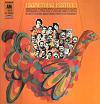
A song in an album “SOMETHING FESTIVE”1968、
The Christmas Song [2 Lani Hall ]
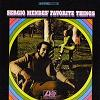
1968: Sergio Mendes’ Favorite Things (Atlantic Records, Producer Nesuhi Ertegün )
1.My Favorite Things (Richard Rodgers / Oscar Hammerstein)
2.Tempo Feliz (Happy Times) (Baden Powell / Vinícius de Moraes)
3.Ponteio (José Carlos Capinam / Edu Lobo)
4.Veleiro (The Sailboat) (Edu Lobo / Torquato Neto)
5.A Banda (Chico Buarque)
6.I Say A Little Prayer (Burt Bacharach / Hal David)
7.Comin’ Home Baby (Bob Dorough / Ben Tucker)
8.Boa Palavra (The Good Word) (Caetano Veloso)
9.O Mar é Meu Chão (The Sea is My Soil) (Nelson Motta / Dori Caymmi)
10.So What’s New (John Pisano)
This is an all instrumental easy listening hotel elevator album. This one is excluded from Brasil ’66 discography.
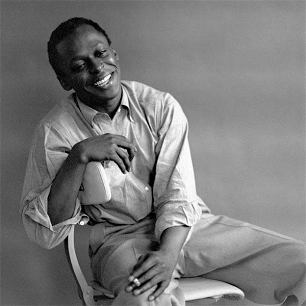
In 1968, for the album “Filles de Kilimanjaro, ” Miles Davis changed members; Herbie Hancock to Chick Corea, Ron Carter to Dave Holland.
By the great hit of The Look Of Love, Sergio Mendes was very shocked. He thought that it was the end of this group.
In 1968, a big change of members.
Sergio Mendes – Piano
Lani Hall – Vocals
Karen Philipp – Vocals
While Janice Hansen was singing in chorus behind Lani Hall, Karen Philipp is able to sing beside Lani Hall.
Dom Um Romão – Drums
In 1971, he will be the percussionist of Weather Report. He was the first husband of Flora Purim, but I dom um care.
Rubens Bassini – congas
Sebastião Neto – Electric Bass
Does he really like playing electric bass? Nevertheless, he was the bassist of João Gilberto and Stan Getz. Thus, “The Girl from Ipanema”(1964) and “The Fool on the Hill” are with the same bassist.
At the time of Brasil ’66, it was the time of the birth of electric bass and 16 beats. Four our modern ears, the bass lines were not yet evolved. In ad lib part of ” Moanin’ “, “Crystal Illusions, ” “Ye-Me-Le”, “Easy To Be Hard ” , we can not understand these bass lines.
They make five albums.
1968: Fool On The Hill
1969: Crystal Illusions
1969: Ye-Me-Lê
1970: Live at the Expo’70
1971: Stillness
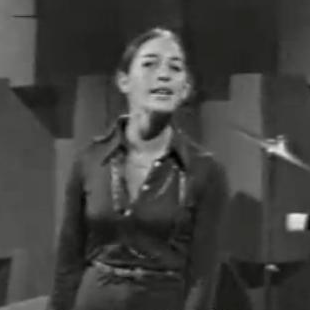 Thanks to Hardbossa
Thanks to Hardbossa

1968: Fool on the Hill (A&M Records, Producer Sérgio Mendes )
1. Fool on the Hill [ 2 Lani Hall ] (John Lennon / Paul McCartney)
2. Festa [ 2 Lani Hall , (Gracinha in chorus)] (Dori Caymmi / Paulo César Pinheiro / Lani Hall)
3. Casa Forte [ 2 Lani Hall ] (Edu Lobo)
Chick Corea is under the influence of Sergio Mendes.
4. Canto Triste [ Lani Hall ] (Edu Lobo / Vinícius de Moraes / Lani Hall)
This beautiful slow bossa of 4’15” has no ad-lib part, because there is only one chorus. After 6 beats intro,
A All I had was just a dream…
A’ I can still forgive you…
B Look for the stars to say…
A’ While I wait, I see your smile… and 6 beats ending.
Melodic minor scale and chromatic.
5. Upa, Neguinho [ 2 Lani Hall, +Gracinha Leporace in back chorus with Sergio Mendes] Edu Lobo / Gianfrancesco Guarnieri)
6. Lapinha [ Gracinha Leporace ] (Baden Powell / Paulo César Pinheiro)
Piano starts at 1:20. The most beautiful getting-in of piano.
7. Scarborough Fair [ 2 Lani Hall ] (Traditional, arranged by Paul Simon and Art Garfunkel)
8. When Summer Turns To Snow [ Lani Hall ] (Dave Grusin / Alan Bergman / Marilyn Bergman)
9. Laia Ladaia (Reza) [ 2 Lani Hall ] (Edu Lobo / Ruy Guerra / Norman Gimbel)
Ó meu santo protector
Traga o meu amor
semitone up … Cm7 F7 … whistling .. Ebm7 Ab7 ….
John Pisano – Guitar
Oscar Castro-Neves – Guitar
Dave Grusin – Orchestra Arranger
Gracinha Leporace – Vocal
I put the name of singer in [ ]. This has been determined solely by my ear, not by any official documents.

1969: Crystal Illusions (A&M Records, Producer Sérgio Mendes, Herb Alpert )
1 The Dock of the Bay [ 3 Karen Philipp ] Steve Cropper, Otis Redding (1968)
The melody is the same line as the bass.
2 Viola [ 2 Lani Hall ] (Viola Enluarada) Marcos Valle, Paulo Sérgio Valle
Viola, violão = guitarra. “Baden Powell foi um violonista brasileiro.”
3 Song of No Regrets [ Lani Hall ]Lani Hall, Sérgio Mendes
4 Salt Sea [ 2 Lani Hall ] Lani Hall, Sérgio Mendes, Sebastião Neto
5 Empty Faces [2 Lani Hall ]Lani Hall, Milton Nascimento
6 Pretty World [2 Lani Hall] (“Sá Marina”; Antonio Adolfo, Tibério Gaspar; Alan Bergman, Marilyn Bergman)
7 Dois Dias [2 Lani Hall ] Dori Caymmi, Nelson Motta
8 You Stepped out of a Dream [2 Lani Hall ] Nacio Herb Brown, Gus Kahn
I think it’s the trumpet tone of Mellotron.
9 Crystal Illusions (Memórias de Marta Saré) [ Lani Hall ]Gianfrancesco Guarnieri, Lani Hall, Edu Lobo
Oscar Castro-Neves – Guitar
Dave Grusin – Orchestra Arranger
I put the name of singer in [ ]. This has been determined solely by my ear, not by any official documents.

1969: Ye-Me-Lê (A&M Records, Producer Sérgio Mendes)
1.Wichita Lineman [ Lani Hall left , Karen Philipp right] (Jimmy Webb)
2.Norwegian Wood [ 2 Lani Hall left , +2 Karen Philipp right] (John Lennon / Paul McCartney)
3.Some Time Ago [ Lani Hall ] (Sergio Mihanovich)
4.Moanin’ [ 3 Karen Philipp ] (Bobby Timmons)
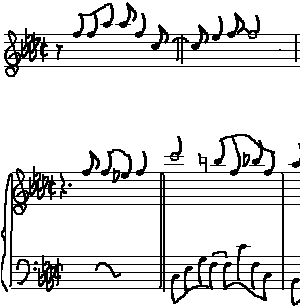
5.Look Who’s Mine [ Lani Hall ] (Marcos Valle / Paulo Sérgio Valle / Alan Bergman / Marilyn Bergman)
6.Ye-Me-Lê [ Gracinha Leporace extreme left, Lani Hall left-center, Karen Philipp ] (Luis Carlos Vinhas / Chico Feitosa)
7.Easy To Be Hard[ 2 Karen Philipp ] (James Rado / Gerome Ragni / Galt McDermot)
8.Where Are You Coming From? [ ] (Dori Caymmi / Nelson Motta / Lani Hall)
9.Masquerade [2 Lani Hall ] (Leonard Haynes / Ron Rose)
10.What the World Needs Now [3 Karen Philipp. She has another voice. A hard voice, like someone of African origin. ] (Burt Bacharach / Hal David)
Oscar Castro-Neves – Guitar
Dave Grusin – Orchestra Arranger, Conductor
Larry Levine – Engineer
I put the name of singer in [ ]. This has been determined solely by my ear, not by any official documents.
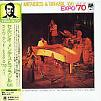
1970: Live at the Expo ()
Live recording. Bossa Rio ( with Gracinha Leporace “Live At The Expo ’70”) performed before Brasil ’66 in the same evening. We can listen to Lani Hall who sings non-falsetto that gives dynamism on the stage. As Lani Hall is the lead vocal, naturally Karen Philipp lack the first note of each phrase. So, even if Lani Hall sings in wrong verse, Karen Philipp can sing together.
Some people don’t apreciate this album. But I like this album. Just imagine that Lani Hall and Karen Philipp start singing Pretty World before you. Also Dom Um Romão is there. You can listen to Lani Hall (your left hand side) and Karen Philipp (your right hand side) really in separated way. In 1970, I was a little Japanese boy. I still remember that I watched that concert on TV (Bossa Rio’s concert too). Especially I remember Rubens Bassini’s face. It’s difficult to forget his face.
1. What the World Needs Now/Pretty World (Sa Marina)
2. Going out of My Head
3. Pra Dizer Adeus [To Say Goodbye]
4. (Sittin’ On) The Dock of the Bay
5. Day Tripper
6. The Fool on the Hill
7. Scarborough Fair
8. Norwegian Wood
9. Mas Que Nada
Vocals repeats with the unit of 3 bars, while the instruments do 2 bars.
10. Viola
Sérgio Mendes – Piano
Lani Hall – Vocals
Karen Philipp – Vocals
Sebastião Neto – Bass
Rubens Bassini – Percussion
Dom Um Romão – Drums
At the Theatre Expo, 1970, Osaka, Japan.
Maybe many people who really assisted that concert did not know Dom Um Romão as a great great guru of bossa nova drums. On record, you can hear man’s shoutings; Yah! or Waagggaaoh! or something like that. I don’t know that is from Rubens Bassini or Dom Um Romão.
After Pretty World, Sergio Mendes speaks in Japanese. “Okini.” That is “thank you.” in Osaka dialect. “Mokarimakka?” That is a typical word in Osaka dialect. It means ” Is your commercial business going well?”, because Osaka is a city of commerce and trade. “Minasan, konbanwa.” means “Everybody, good evening.” “Sergio Mendes to Brasil 66 desu. Dozo yoroshiku.” means “We are Sergio Mendes and Brasil 66. Nice to meet you.”
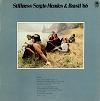
1971: Stillness (A&M Records, Producer Sérgio Mendes, Herb Alpert)
1.Stillness [Lani Hall] (Paula Stone)
2.Righteous Life [ Lani Hall starts first , then Karen Philipp] (Paula Stone)
3.Chelsea Morning


[ All through, duet of Karen Philipp ( non-falsetto) and Lani Hall ( falsetto ), then Gracinha Leporace gets in on the final chorus (” I will bring you incense Owls by night By candlelight By jewel-light If only you will stay” ). “second ” and “tenses” are Karen Philipp’s falsetto voice. Final twice fading out chorus in third ” I woke up, it was a Chelsea morning” is Karen Philipp falsetto ( high ) and Lani Hall ( low ) ] (Joni Mitchell)
Don’t miss listening the drums and the conga play. Sergio Mendes on white keys.
4.Canção do nosso Amor [ ] (Silveira, Medeiros)
5.Viramundo [Lani Hall left, Gracinha Leporace center, Karen Philipp right, ] (Gilberto Gil, José Carlos Capinam)
6.Lost in Paradise [2 Gracinha Leporace ] (Caetano Veloso)
7.For What It’s Worth [3 Karen Philipp] (Stephen Stills)
8.Sometimes in Winter [ Lani Hall ] (Steve Katz)
9.Celebration of the Sunrise [ Lani Hall , Karen Philipp falsetto ]
10.Stillness (Paula Stone) [ Lani Hall ]
Sergio Mendes – Piano
Lani Hall – Vocals
Karen Philipp – Vocals
Claudio Slon – Drums
Rubens Bassini – congas
Sebastião Neto – electric bass
Oscar Castro Neves – Guitar
I put the name of singer in [ ]. This has been determined solely by my ear, not by any official documents.
